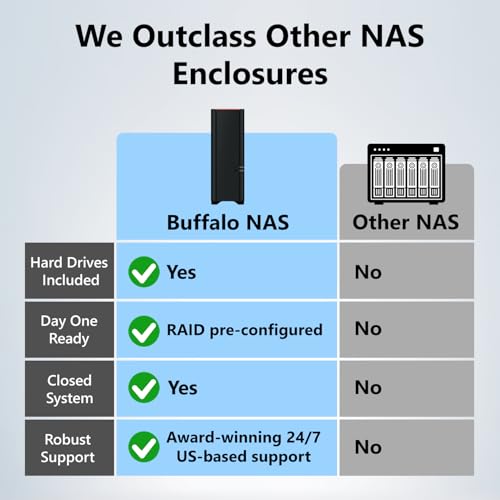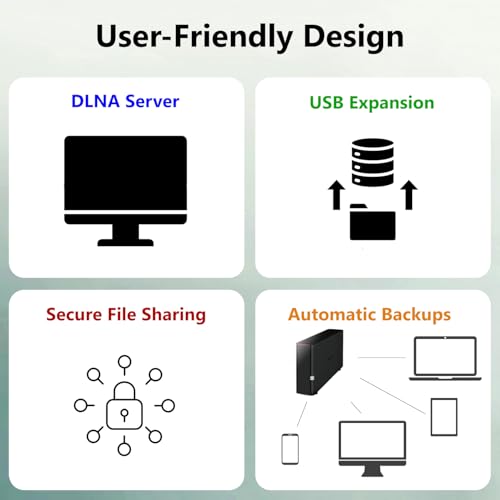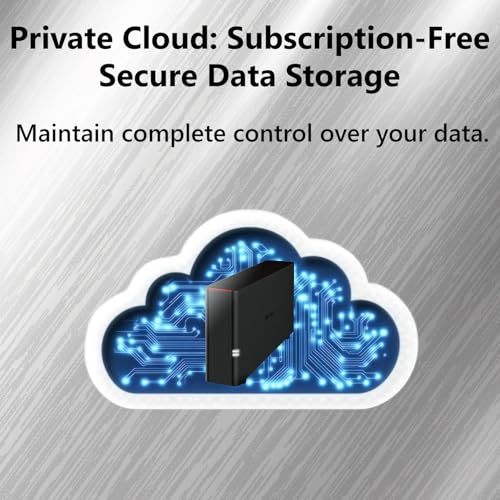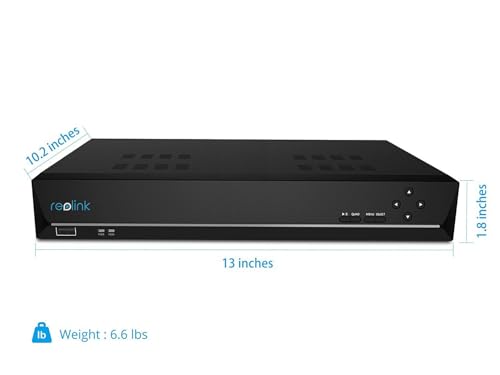



As a security professional, finding the best storage solution for security cameras is crucial for maintaining the integrity and reliability of your surveillance system. With the advancement of technology, there are now various options available that offer different levels of storage capacity, scalability, and security.
One of the most popular storage solutions for security cameras is Network Attached Storage (NAS). NAS devices are dedicated storage systems that connect directly to your network, allowing you to store and access your surveillance footage from multiple cameras in one centralized location. NAS offers a high level of scalability, as you can easily expand your storage capacity by adding additional hard drives to the system.
Another option is cloud storage, which offers the convenience of accessing your surveillance footage from anywhere, as long as you have an internet connection. Cloud storage providers offer varying levels of security, so it’s important to choose a reputable provider that offers encryption and other security measures to protect your data. Cloud storage is also a good option if you have limited physical space for a storage system.
If you prefer to have complete control over your storage solution, a local storage system may be the best option for you. This could be a dedicated server or a standalone DVR/NVR with built-in storage. Local storage systems offer fast and reliable access to your footage, but may require more maintenance and management compared to NAS or cloud storage.
Ultimately, the best storage solution for security cameras will depend on your specific needs and requirements. It’s important to consider factors such as storage capacity, scalability, security, accessibility, and budget when choosing the right solution for your surveillance system.
Understanding the importance of storage for security camera footage
As someone who works with security cameras on a regular basis, I understand the critical role that storage plays in capturing, storing, and retrieving surveillance footage. The importance of storage cannot be underestimated when it comes to security camera systems. It is not just about having the cameras in place; it is about having a reliable and efficient storage solution to ensure that the footage is securely stored and easily accessible when needed.
One of the main reasons why storage is so crucial for security camera footage is the need for evidence. In the event of a security breach or criminal activity, the recorded footage becomes invaluable for investigations and legal proceedings. Without proper storage, the footage may be lost or overwritten, making it impossible to retrieve the evidence needed to identify and prosecute the perpetrators.
Reliability: When it comes to security camera footage, reliability is paramount. The storage solution must be able to handle constant recording and storage of video data without any failures or interruptions. This means using high-quality storage devices and systems that are specifically designed for surveillance purposes, such as network-attached storage (NAS) or digital video recorders (DVRs).
Scalability: Another important aspect of storage for security camera footage is scalability. As the number of cameras and the amount of recorded footage increases, the storage solution should have the ability to expand and accommodate the growing data volume. This can be achieved through the use of scalable storage systems or cloud-based storage solutions that can be easily upgraded or expanded as needed.
Security: Given the sensitive nature of surveillance footage, it is crucial to ensure that the storage solution provides adequate security measures to protect the data from unauthorized access or tampering. This includes implementing encryption, access controls, and regular backups to prevent data loss or breaches.
In conclusion, storage is a vital component of any security camera system. Understanding the importance of reliable, scalable, and secure storage solutions is essential for ensuring the effectiveness and integrity of surveillance footage. By investing in the right storage solution, businesses and individuals can have peace of mind knowing that their security camera footage is well-protected and easily accessible when needed.
Factors to consider when choosing a storage solution for security cameras
When it comes to choosing a storage solution for security cameras, there are several important factors that need to be considered. These factors will help ensure that the storage solution is reliable, efficient, and meets the specific needs of your security system.
1. Capacity: The capacity of the storage solution is one of the key factors to consider. It is important to determine the amount of storage space required to store the video footage from your security cameras. This will depend on factors such as the number of cameras, the resolution of the footage, and the length of time you want to retain the footage. A larger capacity storage solution may be necessary for systems with multiple high-resolution cameras and longer retention periods.
2. Scalability: Another important factor to consider is the scalability of the storage solution. As your security system grows and you add more cameras, you will need a storage solution that can easily accommodate the increased storage requirements. It is important to choose a solution that allows for easy expansion and can scale up as your needs change.
3. Reliability: Reliability is crucial when it comes to storing video footage from security cameras. You need a storage solution that is reliable and can handle the constant recording and storing of video data. Look for storage solutions that have built-in redundancy and fault-tolerant features to ensure that your footage is protected and accessible at all times.
4. Accessibility: The accessibility of the storage solution is also an important factor to consider. You need to be able to easily access and retrieve the video footage when needed. Look for storage solutions that offer remote access and easy search capabilities, allowing you to quickly find and retrieve specific footage.
5. Security: Security is of utmost importance when it comes to storing video footage from security cameras. Look for storage solutions that offer robust security features, such as encryption and access controls, to protect your data from unauthorized access or tampering.
By considering these factors, you can choose a storage solution that meets the specific needs of your security system and provides reliable and secure storage for your video footage.
The top options for security camera storage: Pros and cons
When it comes to storing the footage from your security cameras, there are several options to consider. Each option has its own pros and cons, so it’s important to choose the one that best suits your needs. Here are the top options for security camera storage:
1. Local storage
One of the most common options for security camera storage is to use local storage, such as a hard drive or a network-attached storage (NAS) device. This option allows you to store the footage directly on your own hardware, giving you full control over the security and accessibility of the data. However, local storage can be limited in terms of capacity, and if the storage device fails or is stolen, you may lose all the recorded footage.
2. Cloud storage
Another popular option for security camera storage is to use cloud storage services. This option allows you to store the footage in remote servers, which can be accessed from anywhere with an internet connection. Cloud storage offers virtually unlimited capacity, and the data is usually backed up and protected against physical damage or theft. However, relying on a third-party service for storage may raise concerns about privacy and data security.
3. Hybrid storage
A hybrid storage solution combines the benefits of both local and cloud storage. With a hybrid system, the footage is stored both locally and in the cloud. This provides redundancy and ensures that even if the local storage fails, the data is still accessible from the cloud. However, hybrid storage can be more expensive and complex to set up compared to other options.
- Pros: Full control over security and accessibility, unlimited capacity, redundancy and data protection.
- Cons: Limited capacity, risk of data loss or theft, privacy and security concerns, higher cost and complexity.
Ultimately, the best storage solution for your security cameras will depend on your specific needs and preferences. Consider factors such as budget, storage capacity, data security, and ease of access before making a decision.
Cloud storage vs. local storage for security cameras: Which is better?
When it comes to choosing a storage solution for security cameras, there are two main options: cloud storage and local storage. Each option has its own advantages and disadvantages, and the choice ultimately depends on your specific needs and preferences.
Cloud storage offers the convenience of storing your security camera footage securely on remote servers. This means that you can access your footage from anywhere, as long as you have an internet connection. Cloud storage also provides an extra layer of security, as your footage is stored off-site and is protected against theft or damage to your local storage device. Additionally, cloud storage often comes with features such as motion detection and video analytics, which can help you manage and organize your footage more effectively.
Local storage, on the other hand, involves using physical storage devices such as hard drives or Network Attached Storage (NAS) devices to store your security camera footage. With local storage, you have complete control over your data and can access it even without an internet connection. This can be particularly useful in areas with unreliable or slow internet connections. Local storage also eliminates the need for monthly subscription fees that are often associated with cloud storage services. However, it’s important to note that local storage may be more vulnerable to theft or damage, and you will need to ensure that your storage devices are properly secured and backed up.
- In conclusion, both cloud storage and local storage have their own advantages and disadvantages when it comes to storing security camera footage.
- If you prioritize convenience, flexibility, and remote access, cloud storage may be the better option for you.
- On the other hand, if you value control, reliability, and cost-effectiveness, local storage may be the more suitable choice.
- Ultimately, it’s important to assess your specific needs and consider factors such as budget, internet connectivity, and security requirements before making a decision.
How to set up and configure your chosen storage solution for security cameras
Setting up and configuring your chosen storage solution for security cameras is an important step to ensure that your footage is stored securely and easily accessible when needed. Follow these steps to get started:
1. Choose the right storage solution
Before setting up your storage solution, make sure you have chosen the right one for your needs. Consider factors such as storage capacity, scalability, data retention, and compatibility with your security camera system. Whether you opt for a local storage solution, such as a Network Video Recorder (NVR) or a Digital Video Recorder (DVR), or a cloud-based storage solution, ensure it meets your requirements.
2. Install and connect your storage device
If you have chosen a local storage solution, follow the manufacturer’s instructions to install and connect your storage device. This may involve connecting the device to your network, powering it on, and configuring any necessary settings. Make sure to connect your security cameras to the storage device using the appropriate cables and ports.
3. Configure storage settings
Once your storage device is connected, access its configuration settings. This can usually be done through a web interface or dedicated software provided by the manufacturer. Configure settings such as recording quality, resolution, frame rate, and motion detection settings to optimize storage usage and ensure you capture the necessary footage.
4. Set up user access and permissions
To ensure the security of your stored footage, set up user access and permissions for your storage solution. Create individual user accounts with unique login credentials and assign appropriate access levels. This will help prevent unauthorized access to your footage and ensure that only authorized personnel can view or manage the stored data.
5. Test and monitor your storage solution
After setting up and configuring your storage solution, it is essential to test and monitor its performance regularly. Verify that the cameras are recording and storing footage correctly. Check the accessibility of stored footage and ensure that playback is smooth and reliable. Monitor storage usage and consider implementing a backup strategy to safeguard against data loss.
By following these steps, you can successfully set up and configure your chosen storage solution for security cameras. Remember to regularly maintain and update your storage solution to ensure its continued performance and reliability.
Best storage solution for security cameras
Features
| Part Number | DS223j |
| Model | DS223j |
| Warranty | 2 years |
| Color | White |
| Release Date | 2023-06-28T00:00:01Z |
| Size | DS223j |
Features
| Part Number | LS210D0201 |
| Model | LS210D0201 |
| Warranty | 2 years |
| Color | Black |
| Release Date | 2020-11-16T00:00:01Z |
| Size | 2TB (1x2TB) |
| Format | Desk Calendar |
Features
| Part Number | WD43PURZ |
| Model | WD43PURZ |
| Warranty | 3 Year Limited Warranty |
| Color | Purple |
| Release Date | 2023-05-10T00:00:01Z |
| Size | 4TB |
| Language | English |
| Format | Digital |
| Price history for Western Digital 4TB Purple Hard Drive | |
|---|---|
|
Latest updates:
|
|
Features
| Model | S1 |
| Color | White |
| Release Date | 2024-07-22T14:00:00.000Z |
| Language | Spanish |
Features
| Part Number | D1 |
| Model | D1 |
| Color | white |
| Price history for Cinnado 2K Indoor Pet Monitoring Camera | |
|---|---|
|
Latest updates:
|
|
Features
| Part Number | FBA_RLN16-410 |
| Model | RLN16-410 |
| Warranty | customer service (support@reolink dot com); 30-day money back guarantee; 2-year warranty |
| Color | 5MP 16CH POE NVR |
| Is Adult Product | |
| Size | 16CH NVR w/ 3TB HDD |
Features
| Part Number | ST4000VXZ16 |
| Model | ST4000VXZ16 |
| Warranty | 3 year manufacturer |
| Color | SURVEILLANCE |
| Release Date | 2023-10-03T00:00:01Z |
| Size | 4TB |
| Language | English |
| Format | Digital |
| Price history for Seagate Skyhawk 4TB Video Hard Drive | |
|---|---|
|
Latest updates:
|
|
Questions and answers:
What is the best storage solution for security cameras?
The best storage solution for security cameras is a network video recorder (NVR). NVRs are specifically designed to handle the high-resolution video footage from security cameras and provide a reliable and secure storage solution. They offer features such as remote access, motion detection, and easy retrieval of recorded footage.
Can I use a regular hard drive for storing security camera footage?
Yes, you can use a regular hard drive for storing security camera footage. However, it is recommended to use a surveillance-grade hard drive specifically designed for continuous recording and 24/7 operation. These surveillance hard drives are built to handle the demands of recording and storing video footage from security cameras.
Is cloud storage a good option for security camera footage?
Cloud storage can be a good option for security camera footage, especially for those who want off-site storage and easy access to their footage from anywhere. However, it is important to consider factors such as the cost of cloud storage, internet bandwidth limitations, and the security of the cloud storage provider. It is also recommended to have a local backup of your footage in case of internet connectivity issues.























































